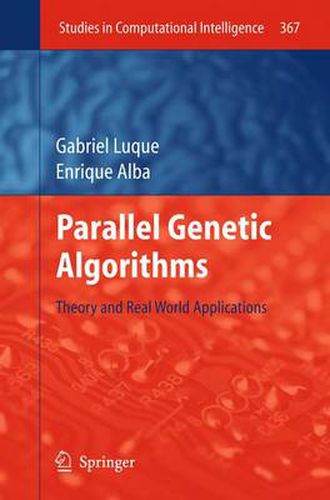Readings Newsletter
Become a Readings Member to make your shopping experience even easier.
Sign in or sign up for free!
You’re not far away from qualifying for FREE standard shipping within Australia
You’ve qualified for FREE standard shipping within Australia
The cart is loading…






This title is printed to order. This book may have been self-published. If so, we cannot guarantee the quality of the content. In the main most books will have gone through the editing process however some may not. We therefore suggest that you be aware of this before ordering this book. If in doubt check either the author or publisher’s details as we are unable to accept any returns unless they are faulty. Please contact us if you have any questions.
This book is the result of several years of research trying to better characterize parallel genetic algorithms (pGAs) as a powerful tool for optimization, search, and learning. Readers can learn how to solve complex tasks by reducing their high computational times. Dealing with two scientific fields (parallelism and GAs) is always difficult, and the book seeks at gracefully introducing from basic concepts to advanced topics.
The presentation is structured in three parts. The first one is targeted to the algorithms themselves, discussing their components, the physical parallelism, and best practices in using and evaluating them. A second part deals with the theory for pGAs, with an eye on theory-to-practice issues. A final third part offers a very wide study of pGAs as practical problem solvers, addressing domains such as natural language processing, circuits design, scheduling, and genomics.
This volume will be helpful both for researchers and practitioners. The first part shows pGAs to either beginners and mature researchers looking for a unified view of the two fields: GAs and parallelism. The second part partially solves (and also opens) new investigation lines in theory of pGAs. The third part can be accessed independently for readers interested in applications. The result is an excellent source of information on the state of the art and future developments in parallel GAs.
$9.00 standard shipping within Australia
FREE standard shipping within Australia for orders over $100.00
Express & International shipping calculated at checkout
This title is printed to order. This book may have been self-published. If so, we cannot guarantee the quality of the content. In the main most books will have gone through the editing process however some may not. We therefore suggest that you be aware of this before ordering this book. If in doubt check either the author or publisher’s details as we are unable to accept any returns unless they are faulty. Please contact us if you have any questions.
This book is the result of several years of research trying to better characterize parallel genetic algorithms (pGAs) as a powerful tool for optimization, search, and learning. Readers can learn how to solve complex tasks by reducing their high computational times. Dealing with two scientific fields (parallelism and GAs) is always difficult, and the book seeks at gracefully introducing from basic concepts to advanced topics.
The presentation is structured in three parts. The first one is targeted to the algorithms themselves, discussing their components, the physical parallelism, and best practices in using and evaluating them. A second part deals with the theory for pGAs, with an eye on theory-to-practice issues. A final third part offers a very wide study of pGAs as practical problem solvers, addressing domains such as natural language processing, circuits design, scheduling, and genomics.
This volume will be helpful both for researchers and practitioners. The first part shows pGAs to either beginners and mature researchers looking for a unified view of the two fields: GAs and parallelism. The second part partially solves (and also opens) new investigation lines in theory of pGAs. The third part can be accessed independently for readers interested in applications. The result is an excellent source of information on the state of the art and future developments in parallel GAs.